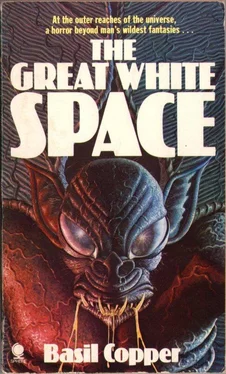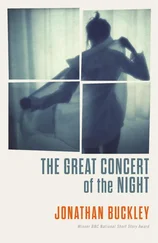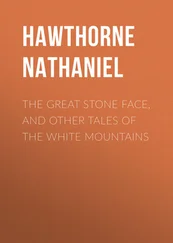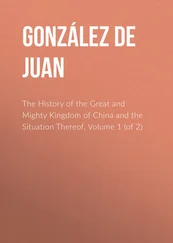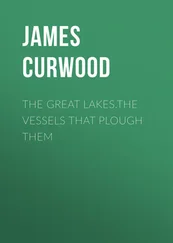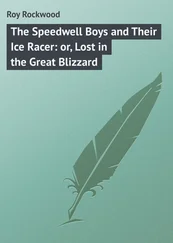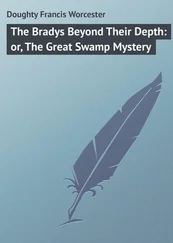Basil Copper - The Great White Space
Здесь есть возможность читать онлайн «Basil Copper - The Great White Space» весь текст электронной книги совершенно бесплатно (целиком полную версию без сокращений). В некоторых случаях можно слушать аудио, скачать через торрент в формате fb2 и присутствует краткое содержание. Жанр: Ужасы и Мистика, Фантастика и фэнтези, Путешествия и география, на английском языке. Описание произведения, (предисловие) а так же отзывы посетителей доступны на портале библиотеки ЛибКат.
- Название:The Great White Space
- Автор:
- Жанр:
- Год:неизвестен
- ISBN:нет данных
- Рейтинг книги:4 / 5. Голосов: 1
-
Избранное:Добавить в избранное
- Отзывы:
-
Ваша оценка:
- 80
- 1
- 2
- 3
- 4
- 5
The Great White Space: краткое содержание, описание и аннотация
Предлагаем к чтению аннотацию, описание, краткое содержание или предисловие (зависит от того, что написал сам автор книги «The Great White Space»). Если вы не нашли необходимую информацию о книге — напишите в комментариях, мы постараемся отыскать её.
So it was that the Great Northern Expedition ventured into the horrors of a stupendously vast underground terrain, in search of the legendary opening to another universe, peopled by an unimaginable spawn of darkness…
The Great White Space — читать онлайн бесплатно полную книгу (весь текст) целиком
Ниже представлен текст книги, разбитый по страницам. Система сохранения места последней прочитанной страницы, позволяет с удобством читать онлайн бесплатно книгу «The Great White Space», без необходимости каждый раз заново искать на чём Вы остановились. Поставьте закладку, и сможете в любой момент перейти на страницу, на которой закончили чтение.
Интервал:
Закладка:
Basil Copper
The Great White Space
For Howard Phillips Lovecraft and August Derleth
Openers of the Way
One
There are those — and they have been many — who were inclined to dismiss my theories as the ramblings of a man in fever. Certainly, the circumstances surrounding the Great Northern Expedition were such as to drive a sensitive person into mindless idiocy. The shifting lights in the sky which preceded the Coming in the spring of 1932 passed generally unnoticed by the world’s press, but the disappearance of so distinguished a field worker as Professor Clark Ashton Scarsdale into the blank void of those vast, unknowable spaces, could hardly fail to arouse comment.
And I, the solitary survivor of the penetration made by the small group of five, have seen enough, God knows, to make the strongest man unhinged. And so I must live on, my story unbelieved, and scorned, until such time as the truth emerges. The world may indeed fear if that period should ever come.
Meanwhile I continue the only man on earth who knows why and how poor Scarsdale went into the Great White Space, never to be seen again by mortal men. But what gibbering, formless things he may now dwell with apart from the world — it is this and other knowledge, long pent within my overheated brain, which makes me start at shadows; or awake fearfully at the night wind’s insidious tapping at my bedroom blinds.
It is the wind itself which makes me abhor the winter in these latitudes; keening from off the world’s dreariest places it seems to freeze the very heart. Robson, my old friend, and the one most inclined to place some small faith in my theories, has truly described me as ‘a man without a shadow’. He meant only that my emaciated form and spectral aspect were hardly substantial enough to imprint their own image on the ground; to me the phrase suggests awful things and in particular that dreadful day in which the Great White Space first came within the knowledge of living men.
In setting down these sketchy notes before the events which they describe have irrevocably burned themselves into insanity within my mind, I do not expect to be believed. At best they will confirm the prejudiced in their bigotry; at worst, if discovered untimely, they will undoubtedly lead to my speedy committal to some secluded asylum where I shall assuredly end my days. That these are numbered I have no doubt; yet even the relief of oblivion is denied me for may I not, beyond the wall of the thin veil that men call life, meet those Others who gyrate and ponderously undulate far out in the utmost reaches of space?
And to be brought face to face with the thing that once was Scarsdale, is a fear too frightful to be contemplated; an eternity in such company and the terror of other beings which are such blasphemies that even I dare not hint at, makes me cling to such poor life as I have. I can still sleep occasionally without dreaming, thank God; this at least is something. And the notes, if they serve the small purpose of warning one sensitive person of the dangers overshadowing the earth, may yet spell great goodness for mankind.
But where to begin? This is indeed the first of my problems, lest my sanity be mocked at the outset. I was born then, Frederick Seddon Plowright; such life as I enjoyed until attaining my majority is no concern of this narrative, still less of interest to the general reader. After graduation I studied various outre subjects on the fringe of my scientific knowledge and eventually drifted into photography. I became an excellent portrayer of scientific and geographic subjects and accompanied a number of important expeditions earlier in the century, notably von Hagenbeck’s penetration of the Quartz Mountains of Outer Mongolia; and of Francis Luttrell’s major earth-boring investigations in the Nevada Desert of 1929, an adventure which almost cost me my life.
My films, depicting as they did, fantastic and extraordinary landscapes and animals at the ends of the earth attracted much attention not only in scientific and geographic journals but in the popular press so that I began to find my services in greater demand. I was living comfortably and as I had the sagacity to secure all the copyrights to my negatives I found in my mid-thirties that I had more than enough money for my needs. So I began to choose my assignments with more care, selecting only those which promised adventurous and even bizarre circumstances in their commission. It was in 1931 that I first heard the name of Clark Ashton Scarsdale.
It was, I believe, in connection with the great sledge journey made in the Antarctic by the late Crosby Patterson; the cruel and tragic fate of Patterson and his five companions is too well-known to bear repetition, but Scarsdale had been consulted on certain aspects of their end. His opinions were widely reported in the press and I remember vividly one photograph, which depicted a strong, bearded figure, examining some of the curious rock inscriptions which had been found at the spot where the six Polar explorers had met death in a most terrible form.
A year or two after this I was myself commissioned to photograph the inscriptions by the Board of Trustees of the Chicago Museum which had originally financed Patterson’s great journey; this was a fascinating task and took me upwards of three weeks, though the inscriptions and their background are not relevant to this narrative. I later applied to and was given permission by the Trustees to publish a number of the photographs in Geographica, a learned magazine in which the increasing bulk of my work was to appear.
This material itself was the cause of further publicity and it was some two months following the publication of the Geographica pictures that I received the first of several enigmatic letters from Professor Scarsdale. But the preliminary contact with a being who was to have such a profound effect upon my life, was prosaic in the extreme. He merely offered congratulations on the technicalities involved in securing such original photographs and commented that they had been extremely helpful to him in his investigations.
He did not at that time suggest a meeting and I should no doubt have soon forgotten this fleeting correspondence had I not, in replying to him, sent him a complete set of prints I had taken for the Museum. These, of course, were greater in number than those which had appeared in the public press and the detail into which I had gone in the matter of enlarging certain portions of the diagrams and hieroglyphs caused the Professor considerable excitement. I shortly received a letter couched in extremely cordial terms and suggesting a meeting at some time and place mutually convenient.
I was living in London at the time and the Professor’s letter was written from an address in Surrey so there was no great difficulty in arranging to meet; my first view of Scarsdale in the flesh was in the incongruous surroundings of a small tearoom not far from the British Museum. We had arranged to meet beneath the portico but in the event of either of us being delayed had suggested the alternative; in the event the Professor had missed his train and came on to the restaurant where I had already ordered tea.
It was one of those dim places, all pewter, brass and oak settles and as the Professor slumped into place opposite me, his back to the light, it took me some minutes to form an exact impression of his features. He was an enormous man, more than six feet three inches tall, I should have said, and proportionately broad. His hair was quite white but despite this I should not have put his age at more than about forty-five and he showed great vigour and determination in his movements and general aspect.
Читать дальшеИнтервал:
Закладка:
Похожие книги на «The Great White Space»
Представляем Вашему вниманию похожие книги на «The Great White Space» списком для выбора. Мы отобрали схожую по названию и смыслу литературу в надежде предоставить читателям больше вариантов отыскать новые, интересные, ещё непрочитанные произведения.
Обсуждение, отзывы о книге «The Great White Space» и просто собственные мнения читателей. Оставьте ваши комментарии, напишите, что Вы думаете о произведении, его смысле или главных героях. Укажите что конкретно понравилось, а что нет, и почему Вы так считаете.
